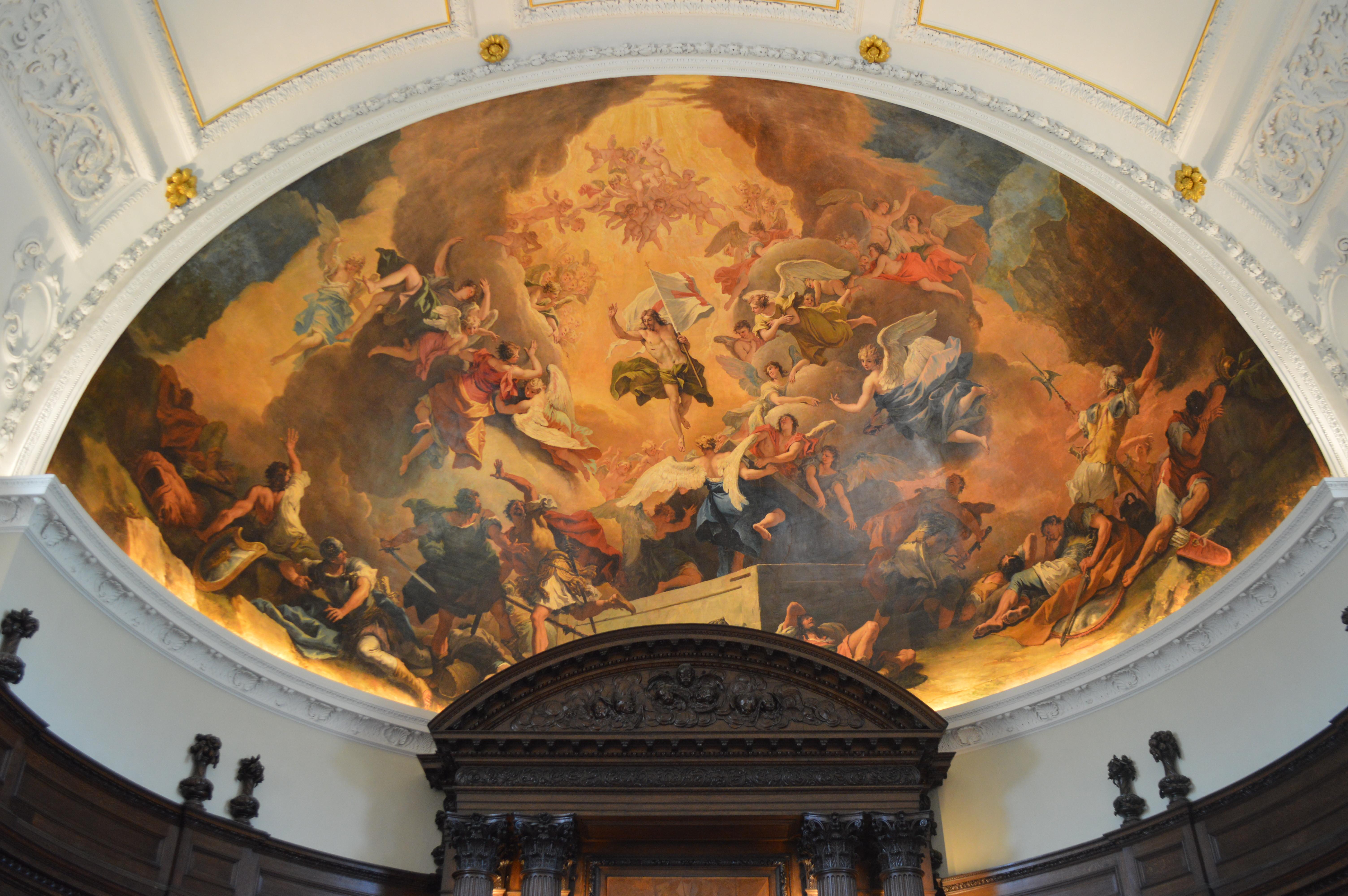St Michael Cornhill
City of London, Greater London
The church lies over the remains of the Basilica, the northern most part of the great Roman Forum built in the first century AD.

The beautiful chapel in the heart of Wren's original buildings features an impressive mural of The Resurrection by Sebastiano Ricci, is home to a professional choir.
Chelsea, Greater London
Built between 1681 and 1687 the chapel is a rare example of Wren's pure ecclesiastical work, being carried out without site constraints. It was designed to accommodate about 500 people, all the staff and pensioners, and rises 42 feet high.
The wainscoting and pews (originally for staff and Horse Guards) are by Sir Charles Hopson, the leading joiner of his day and deputy Clerk of Works at the Royal Hospital from 1691 to 1698. The choir stalls are modern additions. Backs have been fitted to the benches, and the three decker pulpit has been dismantled to make the existing pulpit and reading-desk, otherwise the original plan is maintained. The plasterwork was carried out by Henry Margetts. The carving is by William Emmett, Master Carver before Grinling Gibbons and William Morgan. The organ case is the work of Renatus Harris, but his organ has been replaced by a modern instrument.
The painting of the Resurrection in the half dome of the apse is by Sebastiano Ricci, assisted by his nephew Marco, and dates from 1714. The work was probably paid for, as a donation to the Royal Hospital, by Queen Anne.
The Royal Hospital's magnificent silver gilt altar plate was made by Ralph Leake and is hallmarked 1687-8. It comprises a large alms dish, a pair of candlesticks with baluster stems, a salver, three flagons, four chalices and patens, and a straining spoon. The altar cross, the font and the coat of arms on the front of the organ loft date from 1955-6.
One of the original service books has been preserved. The old registers of baptisms, marriages and burials are now held at the Public Records Office. Burial services were discontinued in 1854, and weddings which were uncommon after 1753 were banned from 1815 to 1919.
The chapel was consecrated in August 1691, and compulsory services held twice daily. Nowadays they are normally confined to the Sunday morning services before which the In- Pensioners parade in Figure Court.
City of London, Greater London
The church lies over the remains of the Basilica, the northern most part of the great Roman Forum built in the first century AD.
City of London, Greater London
The Dutch Church is a reformed church on the site of the 13th century Augustinian friary, the original building granted to Protestant refugees for their church services in 1550 was destroyed during the London Blitz.
Marshfield, Gwent
Mae Eglwys St Mair, Maerun, yn eglwys brydferth sy’n dyddio nôl i’r ddeuddegfed ganrif. Yn nythu’n glud yn y llain las rhwng Caerdydd a Chasnewydd, mae bellach yn adnabyddus am fod yn lleoliad ar gyfer un o episodau Dr Who!